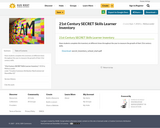
Have students complete this inventory at different times throughout the year to measure the growth of their 21st century skills.
- Subject:
- Education
- Material Type:
- Activity/Lab
- Assessment
- Homework/Assignment
- Date Added:
- 09/07/2018

Have students complete this inventory at different times throughout the year to measure the growth of their 21st century skills.

Various rubrics across K-12 covering Project Based Learning, Project Design, Creativity, Innovation, Presentations, Collaboration, Teamwork, Critical thinking

Student teams creatively construct mobiles using hangers and assorted materials and objects while exploring the principles of balance and center of mass. They build complex, free-hanging structures by balancing pieces with different lengths, weights, shapes and sizes.

In this activity, learners consider the requirements for human life beyond Earth's protection: air to breathe, plentiful food, shielding from ultraviolet light, power, etc. They then work in teams to design and construct a model of a space colony out of craft materials that would allow humans to survive the harsh environments of the Moon or Mars. Teams present their modules and colonies to one another and create a display for the library. This activity is part of Explore! To the Moon and Beyond! - developed specifically for use in libraries.
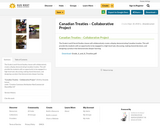
The Grade 6 and 8 Social Studies classes will collaboratively create a display
demonstrating Canadian treaties. This will provide the students with an
opportunity to be engaged in a high-level task, discussing, making shared
decisions, and designing a product that demonstrates deeper learning.
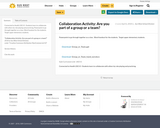
Connected to Health USC4.5- Students learn to collaborate with others by role playing and practicing.
Powerpoint to go through together as a class. Word handout for the students. Target upper elementary students.
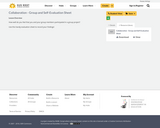
How well do you feel that you and your group members participated in a group project?Use this handy evaluation sheet to record your findings!

Sun West Collaboration High School Grade 10-12 Guidebook- please use the table of contents to navigate the guidebook. Also, we invite you to share resources you think would be suitable for this guidebook with any of the author's of this guidebook.

Sun West Collaboration Middle Years Grade 6-9 Guidebook- please use the table of contents to navigate the guidebook. Also, we invite you to share resources you think would be suitable for this guidebook with any of the author's of this guidebook.
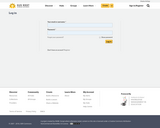
Sun West Collaboration Elementary K-5 Guidebook- please use the table of contents to navigate the guidebook. Also, we invite you to share resources you think would be suitable for this guidebook with any of the author's of this guidebook.
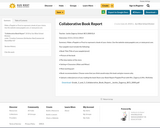
Make a Popplet or Prezi to represent a book of your choice. Use the
website www.popplet.com, or www.prezi.com.
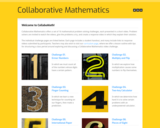
This website has various video challenges with accompanying PDF's for student use . Students are able to post their own videos of how they solved the challenge, and take a look at how others solved it as well.

Students hone their teamwork skills and play off each other's writing strengths as they participate in prewriting activities for a story to be written collaboratively by the whole class.

Using a collaborative story written by students, the teacher leads a shared-revising activity to help students consider content when revising, with students participating in the marking of text revisions.
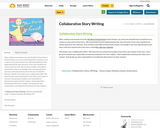
After reading several books from the My Weird School Series by Dan Gutman, my classroom decided that it would be fun to create our own weird school story. We had decided from the beginning that the main character of our story would be our colony supervisor, Mrs. Barclay. Since all titles in the Weird School Series rhyme, we thought it was only appropriate to also have a title that rhymed and so the class created Mrs. Barclay is Sparkly.
This project was a collaborative effort. We knew that we wanted each grade to have their own chapter in the story. Each group of students was responsible for brainstorming ideas for their chapter. I then helped them develop their ideas into a chapter. Each grade was also responsible for providing the illustrations for their chapters.

This resource examines what deeper learning can actually look like in a classroom. Helpful diagrams of what you will see in a classroom along the way are included.
INTRODUCTION
INSIDE THE CLASSROOM
• Applying Content Knowledge
• Working Collaboratively
• Communicating Clearly
• Thinking Critically 1
• Developing an Academic Mindset
• Learning Independently
GLOSSARY
ADDITIONAL RESOURCES
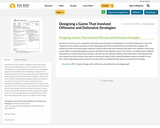
My plan for my 21st century competency dealt with critical thinking and collaboration in
my Physical Education 9 class. The assignment I had students participate in was in designing a
game that involved offensive and defensive strategies. The students also had to brainstorm
game objectives, physical skills being used, teamwork skill, game rules, penalties, and scoring
system. Before we began developing our games, we looked at the evolution of sport. For
instance, we looked at how volleyball and badminton scoring systems have changes in the past
20 years. We also looked at sports like hockey and football and the rule changes from the early
days of the sport to what we see today. Finally, students developed a game and taught it to the
class. They thought about what worked well and what did not and adjusted their games
according to their findings.

This Super Lesson utilizes Project Based Learning to assist learners with designing, building, and testing flying contraptions as an introduction to Engineering. The goal of this project is to engage students in collaborative team work and to introduce students to the Science and Engineering Practices: Asking Questions and Defining Problems, Planning and Carrying Out Investigations, and Constructing Explanations and Designing Solutions.
We have offered this Super Lesson as an 8-week elective course, developing and strengthening student interest in applied Math and Science topics. It could also be offered within upper elementary or middle school Science and Math courses. In addition, each week’s topic could be used as a stand alone mini-lesson if time is limited. We have worked to include multiple options within this unit to make it accessible to both general education and special education programs, including recommendations for modifications and extensions.
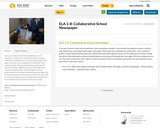
In the past, Eatonia Colony School published a school newspaper monthly. It was decided that while focusing on creativity and collaboration, we would bring the paper to life again! This project was a collaborative school effort. Every student in grades 1-8 participated and had a job to do. We brainstormed ideas together and put our two oldest girls in charge of being the editors. We set deadlines and every grade/student was in charge of designing their own pages.
We have included pictures of our process as well as the cover, table of contents and pictures from our finished product! We have also included a lesson plan and our assessment rubrics.
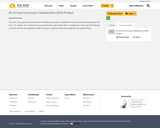
This year I had a goal to try and do more collaborative projects. I decided to choose an Art/ELA based project for the 21 CC artifact. The students wrote and produced a stop motion film in small groups. They used LEGO blocks, used still cameras and software to edit the project. Students chose the soundtrack and special effects.